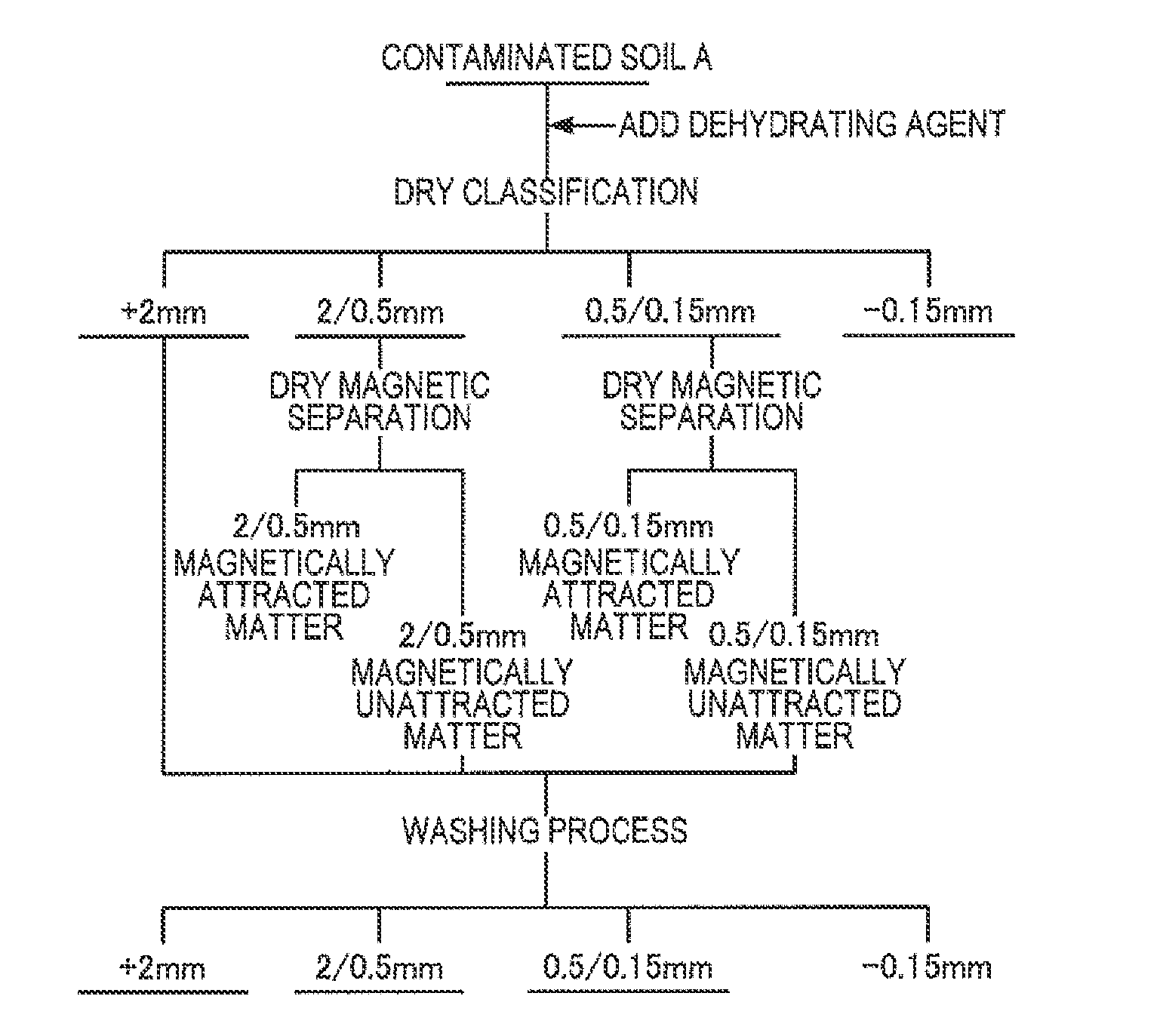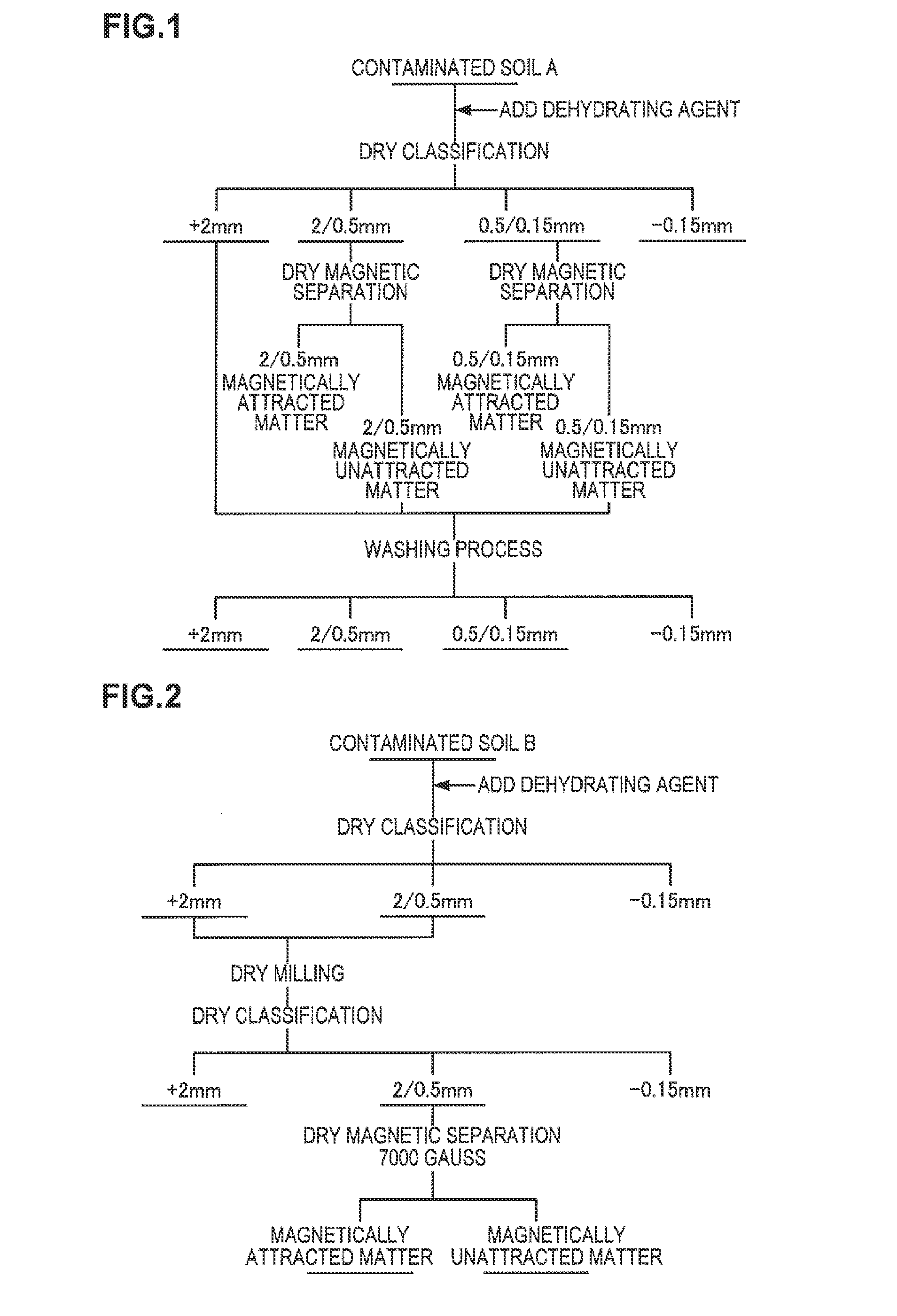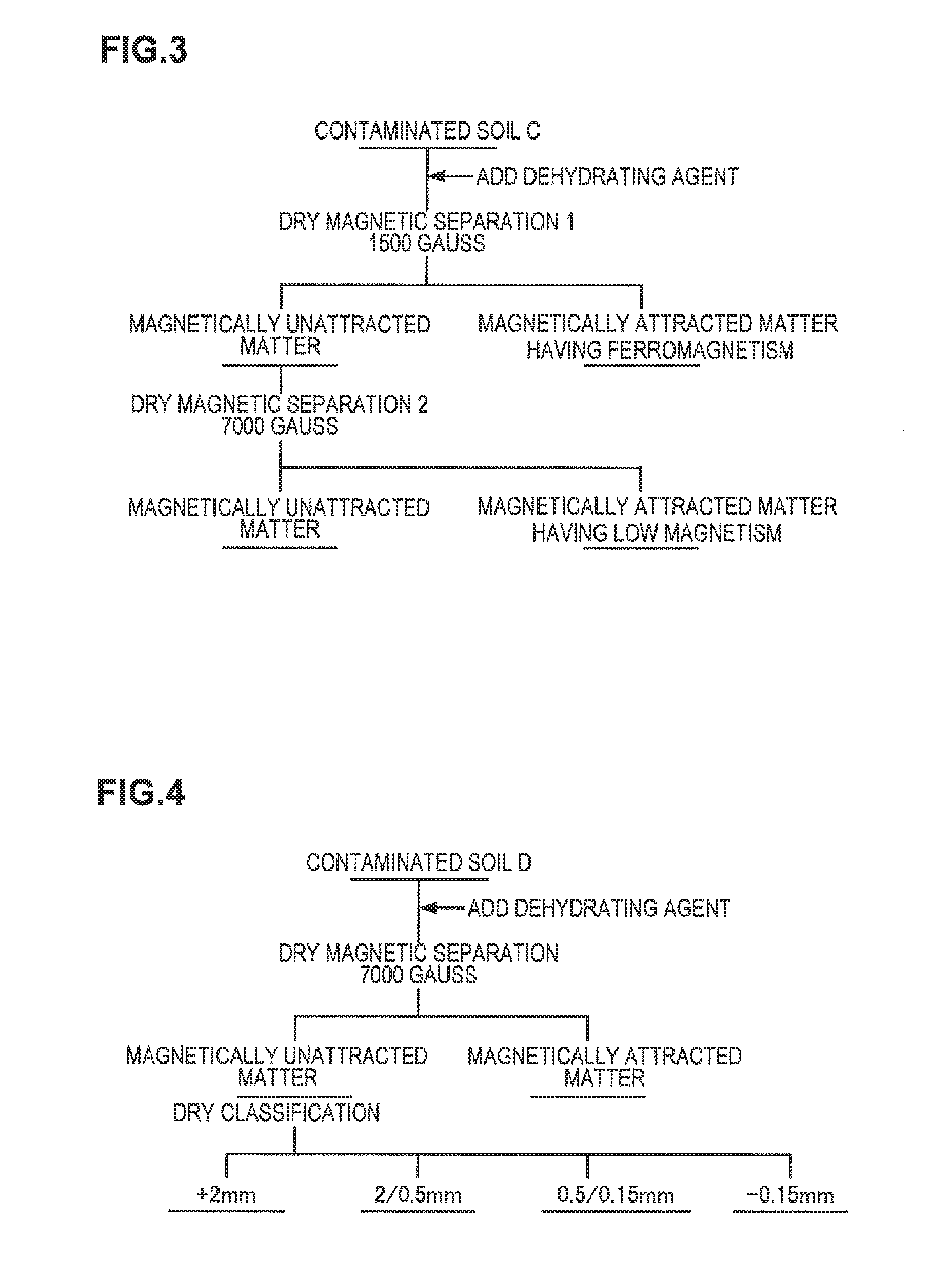Soil cleaning method
a soil cleaning and soil technology, applied in the direction of vortex flow apparatus, grain treatment, flat flow vortex, etc., can solve the problems of large increase in construction cost, difficulty in separating soil into sand and clay, and the inability to accurately classify soil contaminants by dry magnetic separator, etc., to achieve easy reduction of contaminant content and ease of water disposal
- Summary
- Abstract
- Description
- Claims
- Application Information
AI Technical Summary
Benefits of technology
Problems solved by technology
Method used
Image
Examples
examples
[0037]In soil A contaminated by lead (lead content 228 mg / kg), 12 mass % quicklime in soil weight ratio was mixed as a dehydrating agent as shown in FIG. 1, and the mixture was left standing for one hour at room temperature for curing. The water content after the curing became 7.2 mass % and the soil became dry, while the water content before the curing was 12.0 mass % (according to JIS A1203 “Testing Method for Water Content of Soils”. The same applies to the below). Dry classification was carried out to this soil by using sieves with 2 mm, 0.5 mm, and 0.15 mm openings, thereby classifying the soil into soil in a particle size class of 2 mm or more (gravel), soil in a particle size class of less than 2 mm to 0.5 mm (coarse soil), soil in a particle size class of less than 0.5 mm to 0.15 mm (coarse soil), and soil in a particle size class of less than 0.15 mm (fine soil), and ratios of the soils in the respective particle size classes and their lead contents were measured. The ratio...
example 2
[0042]In soil B contaminated by lead (lead content 417 mg / kg), 15 mass % quicklime in soil weight ratio was mixed as a dehydrating agent as shown in FIG. 2, and the mixture was left standing for one hour at room temperature for curing. The water content after the curing became 9.2 mass % and the soil became dry, while the water content before the curing was 15.0 mass %. Dry classification was carried out to this soil by using sieves with 2 mm and 0.15 mm openings, thereby classifying the soil into soil in a particle size class of 2 mm or more (gravel), soil in a particle size class of less than 2 mm to 0. 15 mm (coarse soil), and soil in a particle size class of less than 0.15 mm (fine soil), and ratios of the soils in the respective particle size classes and their lead contents were measured. The ratio of the soil in the particle size class of 2 mm or more (gravel) was 55.0 mass % (lead content 0 mg / kg), the ratio of the soil in the particle size class of less than 2 mm to 0.15 mm ...
example 3
[0046]As shown in FIG. 3, by using a magnet with a low magnetic force (1500 gauss), a first dry magnetic separation step was carried out first to soil C (soil multiply contaminated by chromium, arsenic, and fluorine) which was brought into a dry state with a 8.9 mass % water content reduced from the soil original water content of 12.1 mass % by adding 20 mass % gypsum in soil weight ratio, thereby separating the soil C into magnetically attracted matter having ferromagnetism and magnetically unattracted matter. Next, a second dry magnetic separation step was carried out to the magnetically unattracted matter separated by the first dry magnetic separation step, by using a magnet with a high magnetic force (7000 gauss), to separate it into magnetically attracted matter having a low magnetism and magnetically unattracted matter. Weight distributions of the magnetically attracted matter and the magnetically unattracted matter separated by the respective dry magnetic separation steps, an...
PUM
 Login to View More
Login to View More Abstract
Description
Claims
Application Information
 Login to View More
Login to View More - R&D
- Intellectual Property
- Life Sciences
- Materials
- Tech Scout
- Unparalleled Data Quality
- Higher Quality Content
- 60% Fewer Hallucinations
Browse by: Latest US Patents, China's latest patents, Technical Efficacy Thesaurus, Application Domain, Technology Topic, Popular Technical Reports.
© 2025 PatSnap. All rights reserved.Legal|Privacy policy|Modern Slavery Act Transparency Statement|Sitemap|About US| Contact US: help@patsnap.com



